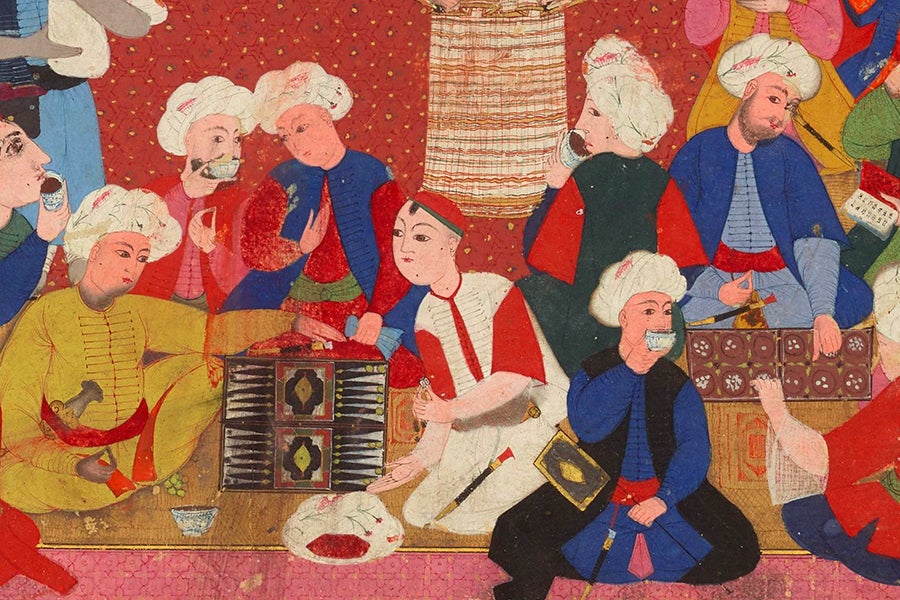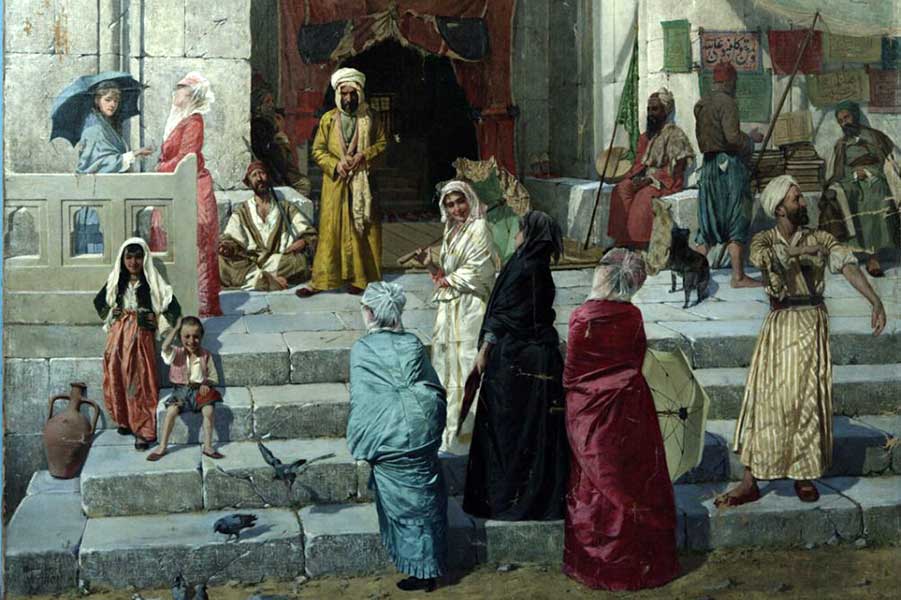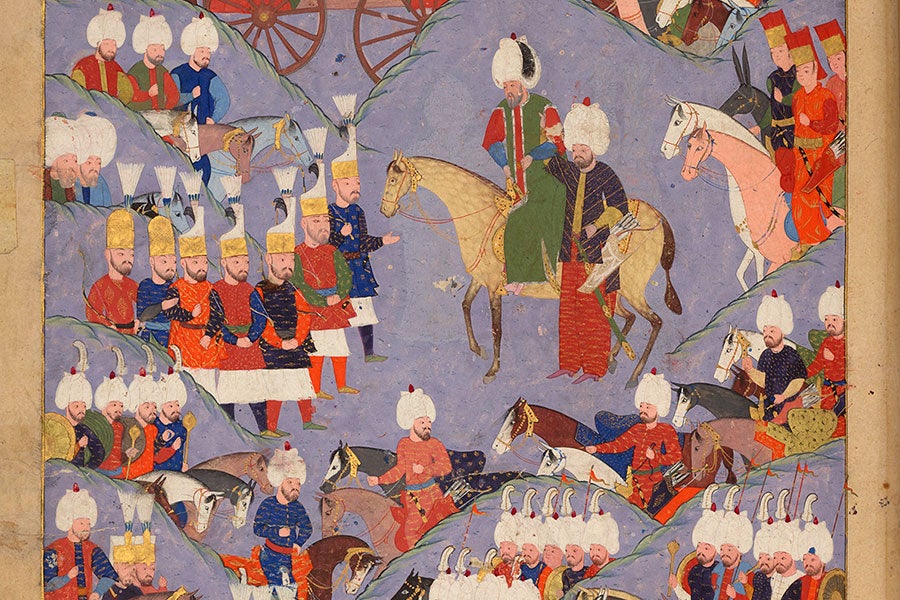Picture in Picture: Images of the Sultan in Balkan Princely Portraits Alison Terndrup Synopsis: This presentation dives into the relationship between power and sartorial symbolism by looking at portraits of hospodars, or local leaders of Ottoman-Balkan principalities. In the early- to mid-nineteenth century, territories in Southeastern Europe – including the areas we know today as…
Tag: The Ottomans
Ottoman Costume Portraits: Photographs in the Elbise-i Osmaniyye
Ottoman Costume Portraits: Photographs in the Elbise-i Osmaniyye Erin Hyde Nolan Synopsis: This presentation examines the Elbise-i Osmaniyye, a catalogue of popular Ottoman costumes commissioned by the Ottoman court for the 1873 Vienna World’s Fair. The Elbise contains 320 pages of text and 74 phototypes of men and women in regional dress. Photographic albums such…
Coffee and Coffeehouses in Ottoman and Safavid Lands, 1500-1800
Coffee and Coffeehouses in Ottoman and Safavid Lands, 1500–1800 Farshid Emami Synopsis: A plant native to the highlands of Ethiopia, coffee was first consumed as a hot beverage in the Yemen during the fourteenth or fifteenth century. During the sixteenth century, the new drink spread beyond the Arabian Peninsula and coffeehouses proliferated in the eastern…
The Nuruosmaniye Mosque and the Ottoman Baroque
The Nuruosmaniye Mosque and the Ottoman Baroque Ünver Rüstem Synopsis: Focusing on the imperial Nuruosmaniye Mosque (1748–55), this presentation explores the Ottoman Baroque, a new, globally resonant style of architecture that reshaped the Ottoman capital of Istanbul during the eighteenth century, when shifting political and cultural circumstances prompted the Ottoman court to develop novel strategies…
The Paintings of Osman Hamdi Bey
The Paintings of Osman Hamdi Bey Emily Neumeier Synopsis: Osman Hamdi Bey (1842–1910) is recognized today as the foremost artist of the late-Ottoman period. Yet, in his time, it was also his unique access to the ancient past as the head of Istanbul’s archaeology museum that drew the special interest of his contemporaries in Western…
Contextualizing the Hünername (Book of Talents)
Contextualizing the Hünername (Book of Talents) Melis Taner Synopsis: This talk introduces the Hünername (Book of Talents), an illustrated manuscript prepared in the late 16th century at the Ottoman court. This work, composed in Ottoman Turkish by Seyyid Lokman, was conceived in four volumes, only two of which were completed. As a whole, the project deals with…
Ottoman Illustrated Histories
Ottoman Illustrated Histories Emine Fetvacı Synopsis: This talk introduces Ottoman painting through an examination of illustrated histories, which were the most popular works chosen for illustration during the sixteenth century. Through a close study of two manuscripts, we explore why these books were illustrated, what kinds of topics they focused on, and how they were…
Touching Mecca and Medina: The Dalā’il al-Khayrāt and Devotional Practices
Touching Mecca and Medina: The Dalā’il al-Khayrāt and Devotional Practices Sabiha Göloğlu Synopsis: This presentation explores a double-page painting of Mecca and Medina included in a late eighteenth-century Ottoman copy of the renowned prayer book entitled Dala’il al-Khayrat (Proofs of Good Deeds). This painting is important because it bears traces of devotional engagement with the images…
İbrahim Müteferrika and the First Printed Books of the Islamic World
İbrahim Müteferrika and the First Printed Books of the Islamic World Yasemin Gencer Synopsis: This presentation video offers an overview of the first Islamic incunabula printed at the Müteferrika press in the first half of the eighteenth century. A chronological survey of their visual attributes reveals the Ottoman publisher’s early experimentations with the new medium. …










